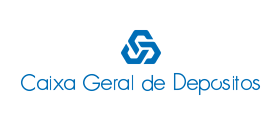
Client:Caixa Geral de Depósitos (CGD)
Industry:Banking and Financial Services
Region:Europe
Driving Positive Change Through RPA

370K hours
of work saved by the end of 2020
18
departments where RPA has been deployed
110+
RPA initiatives being executed
Client Overview
Caixa Geral de Depósitos (CGD) is a 144-year-old Portuguese bank and the largest institution in the country. The bank provides a full range of financial services for both corporations and consumers ranging from investment banking, asset management and commercial banking, to home loans and consumer credit. The bank has a significant international presence with operations in 17 countries and is fully owned by the Portuguese government.
As a forward-looking institution that's highly focused on the needs of the customer, and operational costs reduction, CGD knew that it needed to streamline many of its processes.
In 2018, the bank engaged UiPath and UiPath’s robotic process automation (RPA) solutions to drive efficiency, improve process speed, allowing its employees to concentrate on more value-added work, always with a focus on improving customer satisfaction.
As an institution that was almost a century and a half old, implementing a new technology such as RPA needed to be done carefully and with cooperation among all departments. The first step was to create an RPA center of excellence (CoE) that would coordinate and drive RPA adoption throughout the institution. While the IT Department seemed to be the most obvious choice, after discussions with UiPath and internal stakeholders, it was decided that the CoE would be located in the Business Operations Unit.
We relied on UiPath and our great working relationship and cooperation to brainstorm and set up our Center of Excellence. UiPath pushed us to ask tough questions, how we could make ourselves better, more efficient, improve the way we work. This really helped, especially in the initial stages.
Nuno Martins • Executive Board Member
This was a deliberate choice, given that the Business Development team touched nearly all departments in some way. They'd act as the banks ‘internal consultants’ and were best placed to help drive RPA fully across the entire institution. The CoE consists of a team of 45 people, including external consultants.
After the establishment of the CoE, the next step was to create a working, successful example of an RPA project that would showcase RPA, how it can improve workflows and processes and so that they could get buy-in from the other business units. This started with a relatively simply Back Office task whereby RPA would automate a specific process, removing a bottleneck. It then grew to more sophisticated macros and they started communicating with external elements outside CGD.
Becoming a catalyst for wider change
The teams were careful to balance both the sophistication of the task to be automated, and the relevance of the process. If they were to get buy-in from their colleagues, they had to learn to separate processes that are repetitive but needed human interaction from what processes could be effectively optimized using RPA. As the project moved forward and they interacted with more team members, these thought processes became more efficient and they became better at looking at what work processes they're involved in and how they can be revised and made more efficient.
As their RPA journey progressed, they found that not only were people and processes becoming more efficient, but their colleagues were rethinking the way that they worked. Department heads and employees would sit down and really think about how they operated, and they became much more aware about their work and their approach to day-to-day processes. This would often lead to more structural changes, such as changing entire procedures or the way they used and interacted with software. So rather than just a temporary ‘fix’, RPA became a catalyst for much more profound and sustainable changes within many departments.
The knock-on benefits of automation
Over time, RPA expanded into 18 different departments—from back-office to front-office operations—with many seeing knock-on benefits and solutions. In one example, in the Recovery Division, while the team and the CoE were looking at processes to be automated, they noticed that one such process could simply be automated using software that was being used in another department. They expanded the capabilities of the existing software and could automate this process quickly and simply.
I think the future looks really promising, we are seeing more and more avenues and possibilities for automation, and we are able to automate much more complex and sophisticated processes now.
Nuno Martins • Executive Board Member
The team also became more creative in the way they approached automation. Within the Auditing Department, for instance, they identified one particularly sophisticated element that required automating and split it into multiple processes. They then went about identifying which of these could be automated and which shouldn't—rather than approaching this as a single automated process as would be usual. By splitting this into multiple processes, the team were able to tackle this large and complex task more easily.
Like almost every institution in Portugal, the COVID-19 pandemic affected both the company and their customers. As COVID-related debt moratoriums were introduced by the government, the bank could leverage RPA to help their customers apply for debt relief quickly, easily and efficiently by automating various application steps. The bank automated over sixty thousand communications with CGD customers, something that wouldn't be possible without RPA robots.
As at the end of 2020, RPA had been deployed across 18 departments, executing over 110 RPA initiatives and saving an estimated 370,000 hours for employees who could go on and do more value-added work.
Looking to the future, there's still a long way to go. As the COVID crisis illustrated, there are many more processes that could be automated and made more efficient. It also highlighted how RPA can expand capacity and improve customer service. As the team are automating many of the ‘low hanging fruits’, the sophistication of the processes to be automated is increasing and there's plenty of capacity left to be automated.
By the end of 2020, RPA had been deployed across 18 departments, executing over 110 RPA initiatives and saving an estimated 370,000 hours for employees who were able to go on and do more value-added work.
Nuno Martins • Executive Board Member
One thing that won't change, though, is the involvement, sponsorship, and support from the highest levels of leadership in the bank—something which has been key to the success of CGD’s RPA journey so far.
RPA is becoming more and more integrated within the bank. Now, when new projects are presented to the Board, regardless of the department, they already incorporate an RPA element, which just goes to show not only the importance, and value attached to RPA, but also how its benefits have been experienced throughout the entire institution.
Related case studies
Ready for your own case study?
Speak to our team of knowledgeable experts and learn how you can benefit from agentic automation.




